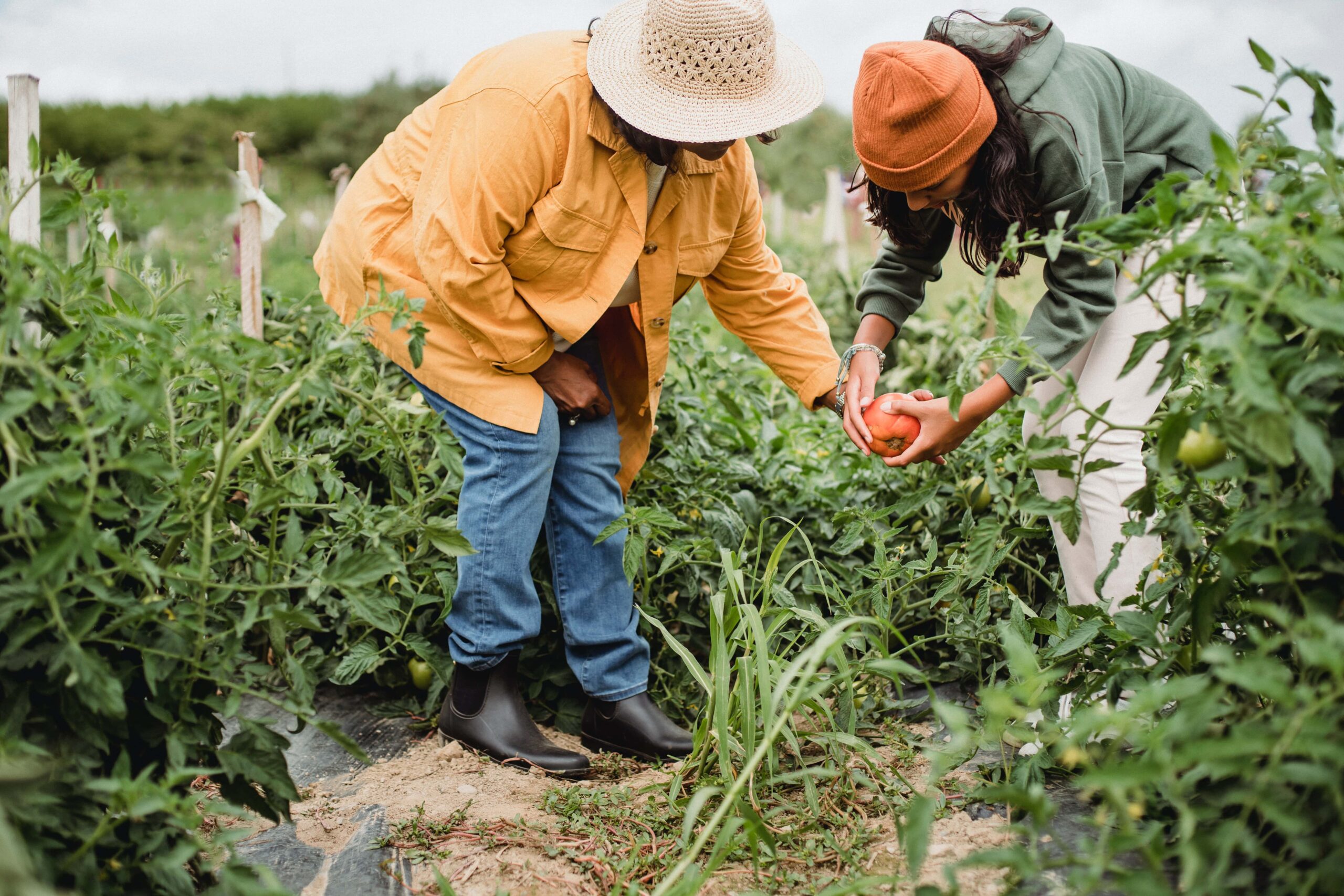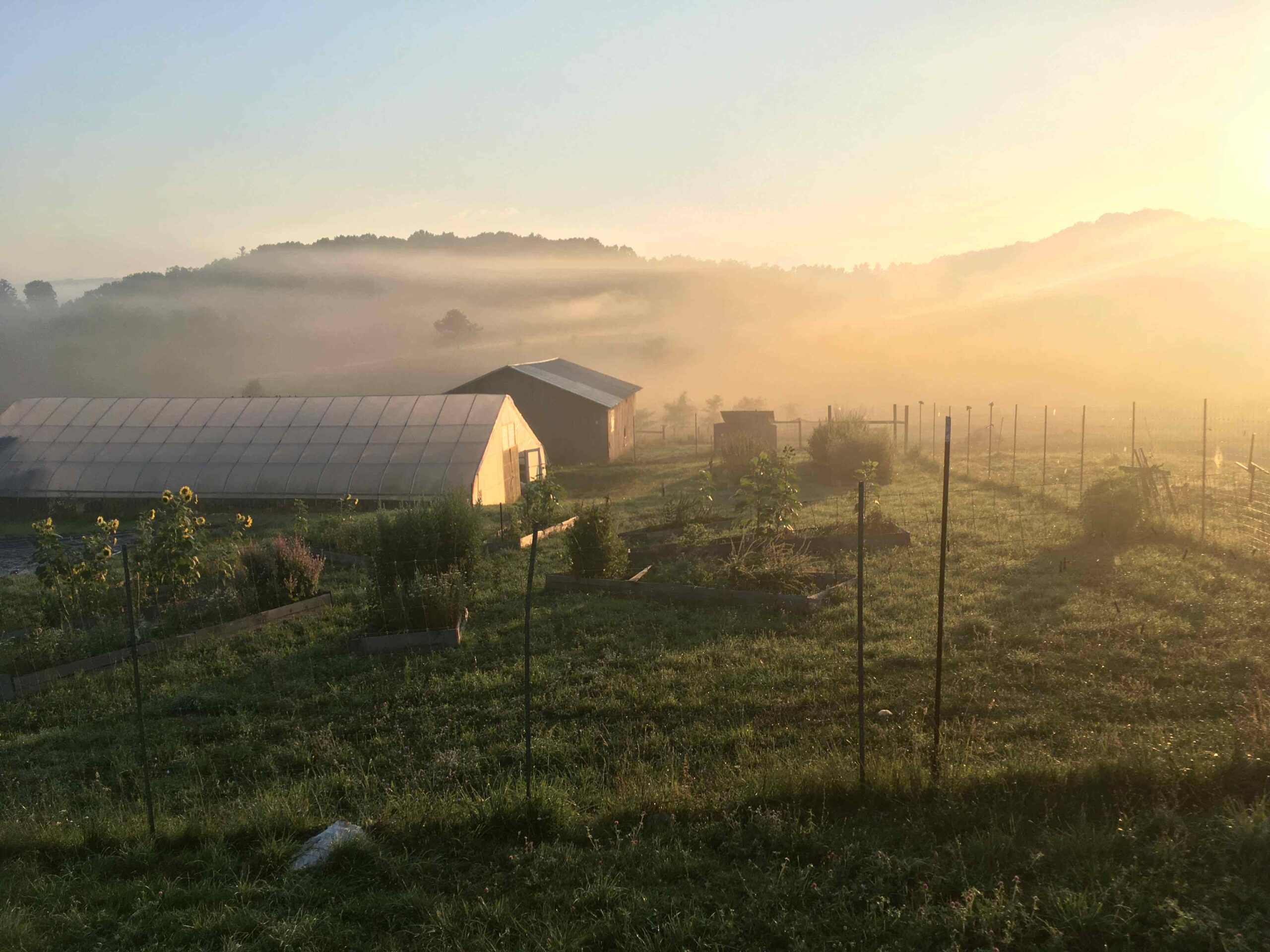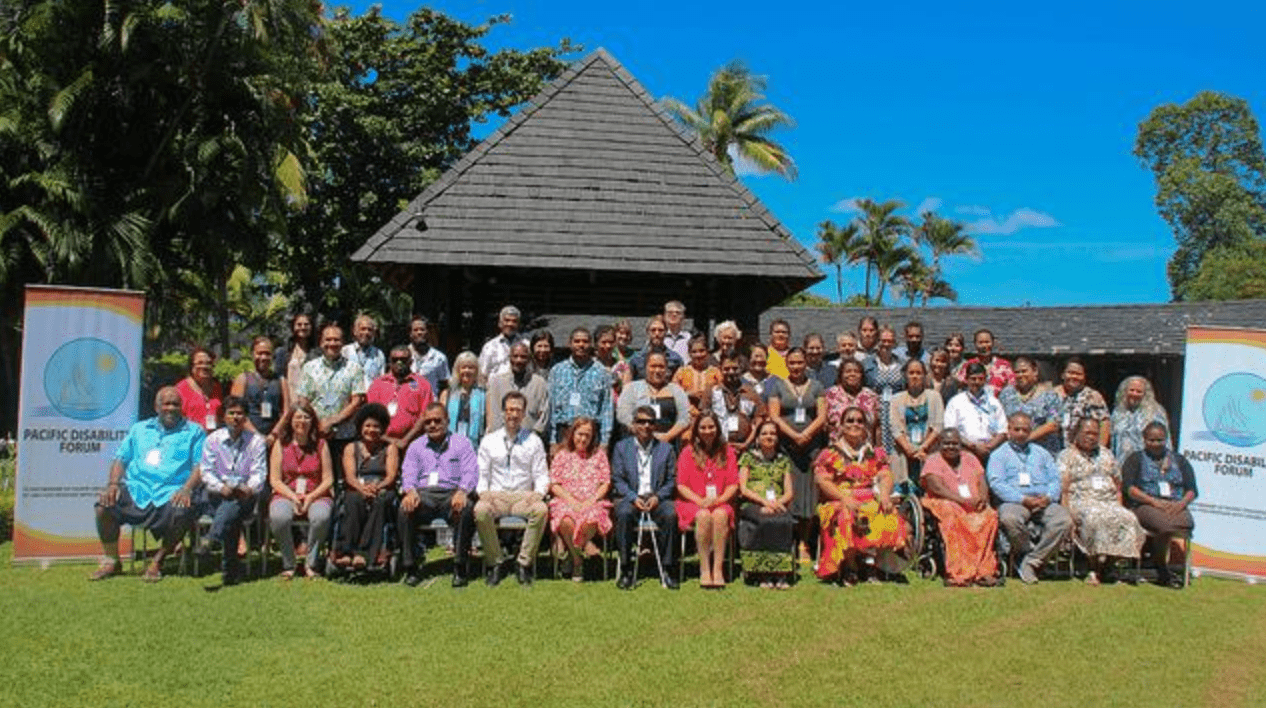An Interview with Bob Swann
Conducted by Kirby White (1992)
Originally published in Community Economics (Summer 1992): 3– 5.
COMMUNITY ECONOMICS: Would you talk about how the community land trust model was developed, and how your own experience led to the development of the model.
BOB SWANN: As a conscientious objector during world War II, I spent two years in prison. It was a great chance to get your head together and learn about a lot of things that you never get a chance to on the outside. I was lucky because there was a group of us— 40 COs, down in Ashland, Kentucky— and we put together a sort of post graduate course for ourselves on economics, with a heavy emphasis on the kinds of things that Gandhi was doing in India, things related to nonviolence and the peace movement. Also we had a correspondence course with Arthur Morgan, who at that time had left TVA and returned to Yellow Springs where he had been President of Antioch College. He had set up a course at the college in what he called “the small community.”
Partly as a result of that course, I learned about things like Celo Community in North Carolina, which Arthur Morgan had helped to found. There were several Henry George communities, too, in Fairhope, Alabama, and Arden, Delaware. Also I learned about Ralph Borsodi’s work in setting up several communities of this kind. Suffern, New York, was the first one. I think the second was Bryn Gweled, outside of Philadelphia.
All of these communities had a similar approach to land ownership— using a leasehold approach rather than individual own ership of land. Later, after the war, the leasehold concept kept intriguing me. But the thing that stuck with me was, well, these were nice communities; they were good for the people there, and they were interesting experiments for the time; but they were what I call enclaves. There was no effort at reaching into the larger community with the concepts— and that kept bugging me.
After Gandhi’s death, one of his followers, Vinoba Bhave, began a movement in India which came eventually to be called the Gramdan, or Village Gift, Movement. What was interesting about this movement was that it was reaching out constantly and growing larger and larger, and had the element of true land reform in it. Vinoba wasn’t just setting up enclaves; he was getting whole villages to adopt his concept— that the land should be held by the village and leased to the members of the village— and that seemed to me to be what was needed.
I moved to Yellow Springs shortly after getting out of prison. Arthur Morgan had asked me to work with him, but I was more interested in building and architecture. I got interested in Frank Lloyd Wright’s work, so I left what Morgan was doing and got into the building field for a while. I moved to Michigan and built some houses for Frank Lloyd Wright, and then to Chicago where I designed my own houses. That experience gave me a lot of direct experience with the high cost of land and the high cost of financing. All of that was sort of grist for the mill. I kept thinking that something ought to be done about those costs.
Then in 1956 I moved back to Philadelphia to work with Morris Milgram on the first inter- racial housing project in the country— at least the first one built by a builder. What Milgram was doing was only a stone’s throw from Bryn Gweled, so I learned more about that community at that time also.
Then came the whole peace movement. My wife and I moved to Connecticut and through most of the ’60s we were mostly occupied with the peace movement. We were given a tract of land and building outside of Norwich, Connecticut, in the town of Voluntown. We set up a kind of land trust to own the property, and it became the base for the Community for Non- Violent Action—CNVA.
One of the focuses of CNVA was the effort to bring together the peace movement and the civil rights movement, the nonviolent aspects of them. In 1963 CNVA organized a walk from Quebec to Guantanamo— that was the plan anyway. We had sponsored many walks, including the San Francisco to Moscow walk, but part of the purpose of the Quebec to Guantanamo walk was to break down segregation along the way. And one of the points where that effort came to be focused was Albany, Georgia, where one of Martin Luther King’s co workers, Slater King— in fact he was also a relative— had been leading an effort to break down segregation. Members of the march— and I wasn’t on the march at the time— spent a month or more in jail in Albany and went on a fast, which helped to cement the relationship between the members of the walk in CNVA and the members of the black civil rights movement in Albany.
I became acquainted with Slater King through all of this, and I proposed to Slater that we start a movement out of the civil rights movement that would break the pattern of land-holding in the South. There was a growing awareness of the whole problem of blacks being pushed off the land. Slater was very interested and agreed to help in any way he could.
I had become familiar not only with the Gramdan movement but also with the Jewish National Fund, which had acquired large areas of the land in Israel and leased it to individuals and groups like the kibbutzim. I was interested in that situation because it not only had the communities like the kibbutzim, but a larger entity holding the land. There was a much larger process going on. I talked to Slater about that and he agreed that it was the kind of thing that was needed in the South. So we organized a trip to Israel and got some small foundation backing for it. Six of us, including four black civil rights leaders, spent two weeks in Israel in 1967. There was an awareness of the accusations of discrimination by Jews against Arabs, and the black members of the group were all skeptical about that aspect of the Jewish National Fund, but they agreed that the land tenure system was one they could use. So when we went back we organized a number of meetings around this idea and got more and more people interested and involved, and set up the organization called New Communities.
Eventually a 5000 acre tract of land was found on the market— an old plantation owned by two men who were retiring. Th e price was a million dollars. In the end most of that had to be borrowed, and that was a tragedy, because the land then had to generate a lot of cash to service the mortgage— about $100,000 a year— a terrible burden.
We were able to get a $100,000 grant from the federal government to do a full-scale proposal on how to develop the land. The planning grant was supposed to guarantee $1 million for the land from a special fund in OEO [Office of Economic Opportunity] that Bobby Kennedy had set up for high impact projects, which didn’t have to get approval from the State. It looked like we were going to get that money, but then Nixon took office before the whole thing came through, and it was killed.
With the $100,000 that we did get, we had worked out a proposal that included a large housing development. We had set aside about 500 acres for housing— only ten percent of the tract, but still a lot of land, and the plan called for about 500 houses. But that never happened, partly because they were scrambling all the time to raise the money to pay off the mortgage.
Five thousand acres is a tremendous amount of land— a big piece to try to chew off. It was probably a mistake to try to chew off such a big one in the beginning, but the thought behind it, at least on my part, was that to get the kind of publicity and the kind of impact that we wanted we had to have something pretty big. You couldn’t do it on ten acres. Even a hundred acres wouldn’t make much of a difference. But 5000 acres could make an impact. At any rate New Communities was the first project that could be called a community land trust project. It had the elements not only of the Jewish National Fund but of the Gramdan Movement.
COMMUNITY ECONOMICS: The Institute for Community Economics was founded about the same time as New Communities. Would you talk about how that developed?
BOB SWANN: The original name of the Institute was the International Independence Institute. It was named by Ralph Borsodi, who returned in 1966 from India, where he had been teaching and had met leaders of the Gramdan movement. With them he had planned to develop an international organization that would train local agents to make small loans for simple tools and other needs to Third World farmers, such as the farmers who leased land through the Gramdan movement. This scheme was in fact similar to the Grameen Bank which developed later in Bangladesh.
However, before the scheme could be carried out, Borsodi’s health failed— he was then 86 years old— and the Indian leaders he had been in touch with were caught up by political changes in that country. So a few of us who had been working with Borsodi decided to limit our efforts to starting a Gramdan movement in the U.S. It was at that time in 1968 that the opportunity in the U.S. South opened up, and we changed the name of the Institute to ICE.
COMMUNITY ECONOMICS: One of the things that has been distinctive about the community land trust model has been the idea that CLTs, unlike the enclaves, should be organized with open memberships, and that both those who lease land from the organization and other members of the surrounding community who do not lease land should be represented on the board of directors. How did that idea get built into the model?
BOB SWANN: That was my contribution. Other than that, we were taking things from the Gramdan movement, the Jewish National Fund, the earlier enclaves and so on, but my contribution was the idea that, if this was going to be a broader movement, a land trust should have an open membership. Then quite a bit later— in the early ’70s— we came up with the notion of a three- part board, so that you have one third elected by the lessees, and one third elected by the larger membership, and then another third that would be selected by the first two thirds.
COMMUNITY ECONOMICS: So New Communities was founded before the idea of the three- part board was developed?
BOB SWANN: That’s right, it didn’t have the three-part board. It did have an open membership. I was interested in the open membership because I thought that if people could join from all around, then you would build into it a real educational element, not just an enclave of people getting together for their own benefit to hold land.
You know, in my grandest dreams I see it as the ultimate land reform movement—that gradually communities will more and more take over and own the land and lease it out to their members as needed at relatively low cost, so that access to land is available to everybody. That’s the long- range dream.
It’s also a fact that all other attempts at land reform that I can think of have failed because they took merely the approach of taking over land and then subdividing it into smaller ownership units for the larger population. It hasn’t worked because inevitably the older structures that were there before began to regain control. The reason was that where large holdings were divided into smaller holdings the farmers or peasants who were able to get access to land nevertheless had to borrow money to buy the things they needed to farm the land. Because these farmers were mortgaged to the hilt, the land was gradually taken back by the same people that owned it before. In any case I think the long- range approach has to be something different than simply dividing up ownership of the land among more people.
COMMUNITY ECONOMICS: As an approach to land reform, how successful do you think the community land trust movement has actually been over the past 20 years? Are you pleased by what you’re seeing now? Frustrated by what you’re seeing?
BOB SWANN: In the first place it seems to me that there are two somewhat different problems between urban and rural land trusts. My interest has tended to be more in the rural side of it, and ICE has moved more to the urban side. I think that what is happening in the urban area is very encouraging. The idea of creating perpetually affordable housing is a good idea. The only thing is that there is a danger of losing track of the land itself. That’s the only thing that worries me about the focus on housing, though I understand the forces that are moving in that direction. Housing is something that everybody needs; therefore it has more power to interest people.
But I think when you look at the rural areas, then the land tends to become more of a focus— because what’s happening to the land is not just a question of occupancy; it’s a question of how you’re using the land, and of the sustainability of the quality and richness and ability of the land to produce. It gets into the environmental concerns more than the urban does.
COMMUNITY ECONOMICS: How do you see the relationship between community land trusts and conservation land trusts? Can they work together?
BOB SWANN: I think there is an important opportunity for community land trusts, particularly the rural ones, to work with the conservation land trusts. The conservation land trust movement is developing very rapidly. Unfortunately, at any rate in my opinion, conservation land trusts tend to have a kind of self- centered interest. Usually they are not set up by people who are interested in having other people have access to the land. They tend to be more interested in keeping other people off the land, at least off the land near them. But the good side is that they are concerned with the environmental aspect of land use, and I think that they can be appealed to. I think that there is potential for bringing the two kinds of land trusts together in mutually advantageous roles.
That’s what we’re trying to do here in Great Barrington. We have organized a local conservation land trust. In a small community like this one, the people who carry a lot of the political weight are likely to be interested in helping to form a conservation land trust. There is a genuine concern about seeing that everything isn’t just over-built, and it has strong political expression in a town like this. In fact the local planning board and its zoning rules are often deliberately structured to make it difficult for a developer to go ahead. That’s a battle that’s going on all over the country.
But a community land trust is not interested in trying to maximize profit by putting as many houses as possible on a given piece of land regardless of what they do for the environment. The community land trust has some of the same kinds of interests in preserving the environment as a conservation land trust, so there is a common ground between them. And our thinking is that it’s better for the community land trust to work with and be supportive of the conservation land trust movement, because that movement does provide a lot of political strength.
Furthermore, when it gets down to immediate practicalities, conservation land trusts that want to acquire land usually have to come up with the money to buy it. There’s a good chance that any tract they want to acquire may have some land that is suitable for housing. So what often happens is that they say, okay, we’ll sell that off to a developer and we’ll get enough money to pretty much cover the cost of the rest of the land, which can then be protected from any further development.
The problem is that the owners of those new homes have an unfair advantage, because they’re surrounded by permanent open space, so the value of their land goes up. You’ve created a land appreciation situation that is not fair to the community as a whole. But if the conservation land trust works with a community land trust rather than a for-profit developer, it won’t sell the community short. The community land trust can capture that appreciated value for the community.





